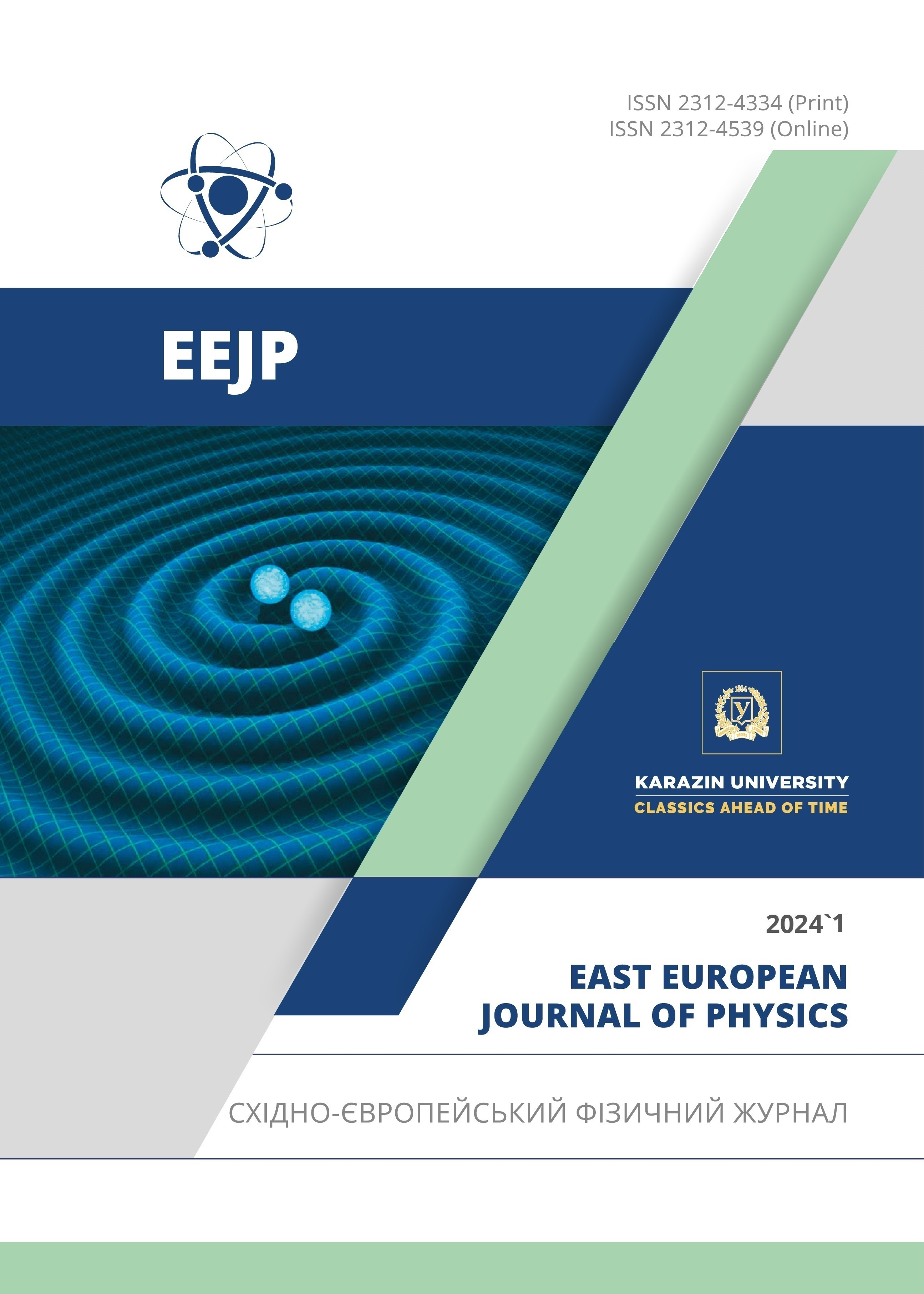Identification of Heavy Metals Pollution Sources in The Territory Adjacent to NSC “Kharkiv Institute of Physics & Technology” by PMF Method
Abstract
In this paper the content of heavy metals at the territory of Pyatihatki settlement, where the National Scientific Center Kharkiv Institute of Physics & Technology (NSC KIPT) is located. The nuclear-physical methods were used to determine the content of chemical elements in the soil samples taken in 30 points at the territory of Pyatihatki settlement in 2011-2021. The elemental analysis was carried out on the analytical nuclear-physical complex "Sokol". The methods, based on registration of characteristic X-ray radiation of atoms and g-radiation of nuclei excited by accelerated protons, were used. After the measurements completion, the data arrays on the content of 15 chemical elements (N, Na, S, Cl, K, Ca, Ti, Mn, Fe, Cu, Zn, Zr, Br, Sr, Pb) in the soil samples were obtained. The data arrays processing was carried out using the EPA (Environmental Protection Agency) PMF v3.0.2.2.2 software based on the application of the PMF (Positive matrix factorisation) algorithm. ArcView 3.2a was chosen as the basic software product for the analysis of spatial distribution of the major polluting chemical elements. As a result of the performed work, the pollution sources, which have an impact on the territory near the NSC KIPT, have been identified. The source of the soil pollution is the autostrades, among which the road around the city Kharkiv stands out, where an increase in the content of Pb, Sr, Zr, Cr and Cu was detected. A source of chromium contamination, located presumably to the north-east of Pyatihatki settlement, was identified. The analyses of the obtained data showed that the PMF method allows to identify the factors that affect the soil contamination, and to determine the presumptive sources of pollution with the help of wind rose.
Downloads
References
V.P. Seredina, Soil Pollution: A Study Guide, (TSU Publishing House, 2015), pp. 346. (in Russian)
I.N. Bezkopylny, “Some methodological approaches to studying the impact of environmental factors on public health in the area of the territorial-industrial complex,” Hygienic sanitation, 11, 24–27 (1984). (in Russian)
B.A. Yagodin, Агрохимия [Agrochemistry], (Agropromizdat, 1989), pp. 639. (in Russian)
Yu.A. Israel, I.K. Gasilina, and F.Ya. Rovinsky, Monitoring of environmental pollution, (Gidrometeoizdat, Leningrad, 1978), pp. 560. (in Russian)
V.N. Bondarenko, L.S. Glazunov, et al., “Analytical installation for nuclear physics analysis methods”, Scientific statements. Series: Physics. Belgorod State University, 2(15), 86–92 (2001). (in Russian)
EPA Positive Matrix Factorization (PMF) 3.0 Fundamentals &User Guide, (U.S. Environmental Protection Agency, 2008), pp. 81. https://nepis.epa.gov/Exe/ZyPDF.cgi/P100GDUM.PDF?Dockey=P100GDUM.PDF
T. Ormsby, Extending ArcView GIS: with Network Analyst, Spatial Analyst and 3D Analyst, (ESRI Press, 1999), pp. 527.
P.K. Hopke, “Application of receptor modeling methods”, Journal of Chemometrics, 17, 255–265 (2003). https://doi.org/10.5094/APR.2011.016
M.F. Kozhevnikova, V.V. Levenets, and I.L. Rolik, “The Pollution Source Identification: Computational Approach ”, PAST, 6(76), 149-156 (2011). https://vant.kipt.kharkov.ua/ARTICLE/VANT_2011_6/article_2011_6_149.pdf (in Russian)
E. Kim, T.V. Larson, P.K. Hopke, C. Slaughter, L.E. Sheppard, and C. Claiborn, “Source identification of PM2.5 in an arid Northwest U.S. City by positive matrix factorization”, Atmospheric Research, 66(4), 291–305 (2003). http://dx.doi.org/10.1016/S0169-8095(03)00025-5
Hygienic regulations on the permissible content of chemical substances in the soil. Order of the Ministry of Health of Ukraine No. 1595, (2020). https://zakon.rada.gov.ua/laws/show/z0722-20#Text (in Ukrainian)
S.M. Ryzhuk, M.V.Lisovy, and D.M. Bentsarovsky, Methodology of agrochemical certification of agricultural lands, (Kyiv, 2003), pp. 64. (in Ukrainian)
Copyright (c) 2024 Maryna F. Kozhevnikova, Volodymyr V. Levenets, Oleksii Yu. Lonin, Oleksandr P. Omelnik, Andriy O. Shchur

This work is licensed under a Creative Commons Attribution 4.0 International License.
Authors who publish with this journal agree to the following terms:
- Authors retain copyright and grant the journal right of first publication with the work simultaneously licensed under a Creative Commons Attribution License that allows others to share the work with an acknowledgment of the work's authorship and initial publication in this journal.
- Authors are able to enter into separate, additional contractual arrangements for the non-exclusive distribution of the journal's published version of the work (e.g., post it to an institutional repository or publish it in a book), with an acknowledgment of its initial publication in this journal.
- Authors are permitted and encouraged to post their work online (e.g., in institutional repositories or on their website) prior to and during the submission process, as it can lead to productive exchanges, as well as earlier and greater citation of published work (See The Effect of Open Access).








